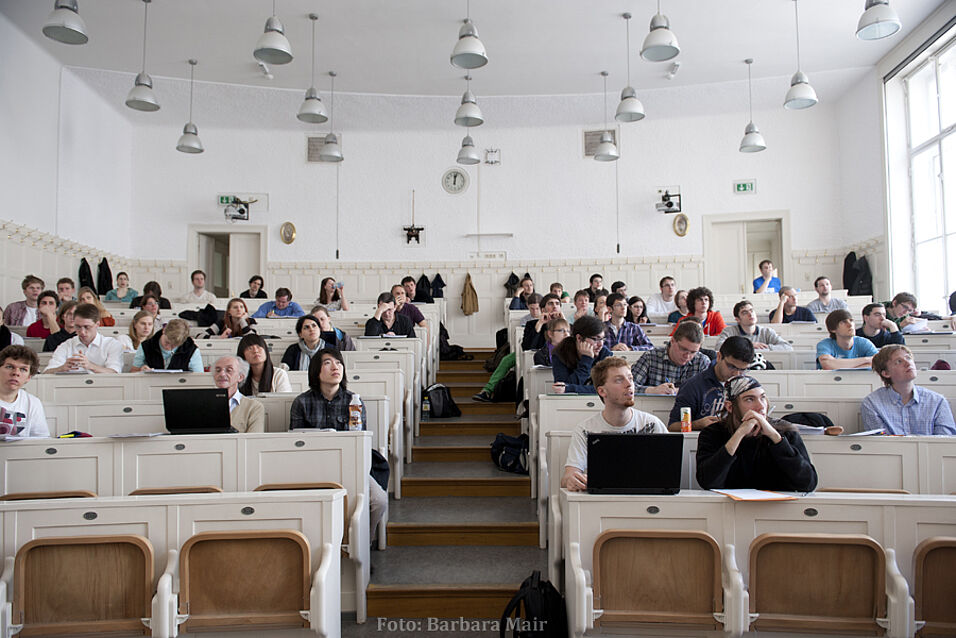Optically active, atomically thin semiconductors are an emergent class of two-dimensional materials. Particularly, monolayers of semiconducting transition metal dichalcogenides (SC-TMDs), such as MoS2, excel in their large optical response with a layer- and energy-dependent extraordinarily high absorbance of more than 15% for a less than 1nm thick crystal1,2. The outstanding optical properties together with intriguing spin- and valley-properties, catalytic activity3, photocatalytic stability4 and anisotropic charge and heat transport renders possible manifold applications of SC-TMD monolayers. Key to the integration of SC-TMD monolayers into opto-/electronic circuits is the possibility to tune and engineer their properties on demand and on-chip e.g. by defects5, dielectric environment6,7 or doping1,8, but also to understand their contact behavior.
After an introduction to SC-TMDs, I will discuss the influence of the dielectric environment on the band structure, on the charge carrier density as well as on the opto-/electronic properties4,6,7 of TMDs and discuss consequences for their integration into optoelectronic circuits6. We reveal that a focused laser illumination, as being used in many standard optoelectronic measurements of MoS2, can modify and anneal the morphology of metal contacts6. As a consequence, a junction evolves with lateral built-in electric fields, although Raman spectra and photoluminescence spectra indicate no significant changes, such as e.g. a crystal phase transition. Such optimized devices can drive ultrafast electromagnetic signals in on-chip high-frequency and THz circuits.
Next, I will briefly introduce van der Waals heterostructures - a novel platform for tailored devices9 and demonstrate the potential of SC-TMDs for energy conversion applications in the areas of photovoltaics and catalysis. The talk will be concluded by an outlook on future research activities. These comprise the exploration of the physical properties of modern solid state nanosystems, their on tailoring and integration in circuitries, the investigation Waals heterostacks towards energy conversion applications as well as the study of interaction driven (quantum) phenomena including doping induced superconductivity and excitonic liquids.
The work is supported by the Deutsche Forschungsgemeinschaft (DFG) via excellence cluster Nanosystems Initiative Munich (NIM) as well as DFG projects WU 637/4-1 and HO3324/9-1.
[1] U. Wurstbauer, B. Miller, E. Parzinger, and A. W. Holleitner, J. Phys. D: Appl. Phys. 50, 173001 (2017).
[2] S. Funke, B. Miller, E. Parzinger, P. Thiesen, A. W. Holleitner, and U. Wurstbauer, J. Phys.: Condens. Matter 28, 385301 (2016).
[3] E. Parzinger, E. Mitterreiter, M. Stelzer, F. Kreupl, J. Ager, A. Holleitner, and U. Wurstbauer, Applied Materials Today, 8, 132-140 (2017).
[4] E. Parzinger, B. Miller, B. Blaschke, J. Garrido, J. Ager, A. Holleitner, and U. Wurstbauer, ACS Nano, 9 (11), 11302–11309 (2015).
[5] J. Klein, A. Kuc, A. Nolinder, M. Altzschner, J. Wierzbowski, F. Sigger, F. Kreupl, J.J. Finley, U. Wurstbauer, A. W. Holleitner, and M. Kaniber, 2D Materials 5, 011007 (2018).
[6] E. Parzinger, M. Hetzl, U. Wurstbauer, and A. Holleitner, npj 2D Materials and Applications, 2D Materials and Applications 1, 40 (2017).
[7] S. Diefenbach. E. Parzinger, J. Kiemle, J. Wierzbowski, S. Funke, B. Miller, R. Csiki, P. Thiesen, A. Cattani-Scholz, U. Wurstbauer, and A.W. Holleitner, submitted (2017).
[8] B. Miller, E. Parzinger, A. Vernickel, A. Holleitner, and U. Wurstbauer, Appl. Phys. Lett. 106, 122103 (2015).
[9] B. Miller, A. Steinhoff, B. Pano, F. Jahnke, A. Holleitner, and U. Wurstbauer, Nano Lett. 17(9), 5229–5237 (2017).

